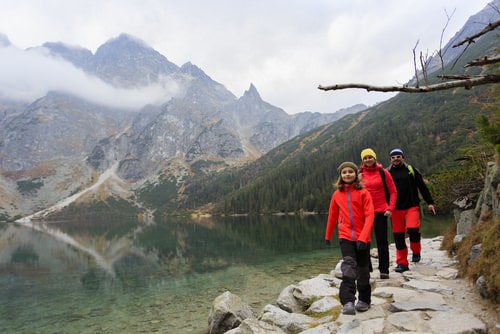
Do you like searching for hidden treasures? Do you like spending time outdoors? Do you have access to a global positioning system (GPS)? If you answered yes to these questions, you may want to give geocaching a try. If you aren’t sure what geocaching is, keep reading to learn more.
The word “geocaching” is a combination of two words – “geo,” meaning earth and “cache,” which means hidden in French. So, a geocache is something that is hidden somewhere on the earth. To find these hidden treasures, you will need to have a sense of adventure, strong legs and the willingness to search for them.
Geocaching began when Dave Ulmer hid the first “treasure” near Beaver Creek, Oregon in May of 2000. He included a logbook, a can of beans, mapping software, $5 cash and a slingshot. He posted the coordinates for the treasure, or stash, on a USENET group and called the group “GPS Stash Hunt.”
As people began finding the stash that Dave hid, they shared their find with others who then went to find the same stash. One person, Mike Teague, started a mailing list where people could post other stashes. Mike Stum was the first person to call this new hobby “geocaching,” which it has been called ever since.
Geocaching can be a great activity for children to enjoy with their father, but it really can be enjoyed by the entire family. It provides a sense of adventure because you’re looking for something that is hidden; it also provides great outdoor exercise. Some reports indicate there could be over 1 million caches hidden around the world. You shouldn’t have to travel long distances, unless you want to; there are probably some caches near your home.
What do you do if you don’t live near the woods or fields? Don’t give up hope. Many geocache locations are in more populous areas. Small town or large city, chances are you will find a cache near you.
Where do you find your first geocache? Head over to the geocaching.com website. It will provide a list of coordinates. You should be able to locate geocaches near your from that website. You can also search the internet to see if there are other geocache websites. The items will be hidden well enough that someone who isn’t looking for them won’t find them, but they should be easy enough to find with a GPS. The containers will be relatively small, a cubic foot or smaller, as well as watertight. They are usually found on public lands, or on private land with the owner’s permission.
What will you find in a geocache? That depends upon when you find it. The items usually won’t be valuable, but you will want to be sure to take something you can add when you find one. You are allowed to take one object out of the geocache and then add something to replace it. You may also find a log book in the container. Please fill it out with your name (or code-name) and a date so others can see who found the treasure.
Prepare for your first geocache expedition the same way you would for a day long hike. Take a backpack with spare batteries for your GPS, printout of the coordinates for the cache, bug spray, a camera to document your trip, hand wipes, binoculars, a first aid kit, rain gear for everyone on the hike, snacks and water for everyone, trash bag to carry out your own trash and anything else you might find. It is also helpful to carry a few plastic zip top bags and duct tape to repair a container that is damaged so others can find the cache later.
Finally, like with hiking, be sure to let someone know where you are going and when you expect to return. Take a fully charged cell phone. Check in with family and friends so they know where you are. Most of all have fun and happy hunting!

